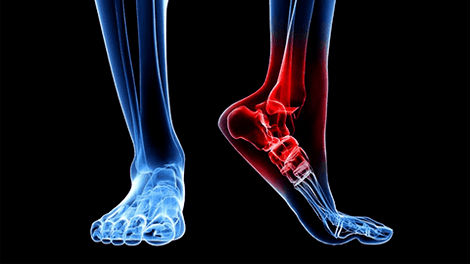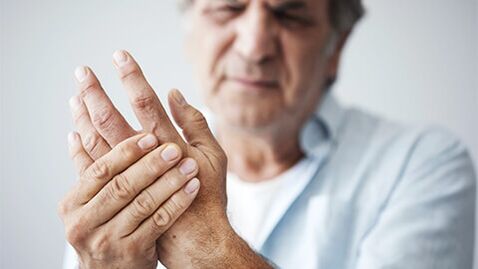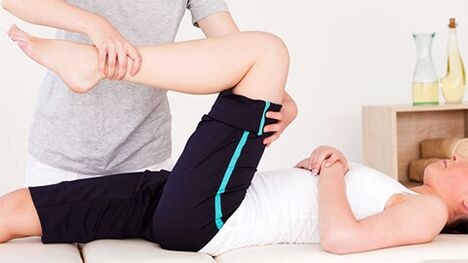
Arthrosis is an entire group of dystrophic diseases of joint apparatus with various etiology, but a similar clinical image of pathological changes.Hyaline articulation cartilage, then drunk bone tissue, joint capsule and ligament apparatus are exposed to destruction and deformation.The disease is chronic progressive and without proper treatment can significantly limit the patient's motor activity.
The diagnosis and treatment of pathology are involved in an arthropist, rheumatologist, surgeon, orthopedist.
general information
Arthrosis is diagnosed in approximately 1/5 of the population of the planet, but the disease is more characteristic of elderly.This proves the statistics of their dissemination between different ages:
- Young people up to 40 years old, no more than 6-7 %;
- Mature faces after 45 years to 20-25%;
- After 70 years - up to 80%.
The disease affects the tissues under a constant load: small joints of the hands and more legs, hip and knee joints, areas in the cervical and thoracic parts of the spine, with a little less ankle and shoulder joint.
Observation! The defeat of the interphalantic joints of hands in women occurs 10 times more often than in men.
In many Western countries, the term "arthrosis" is not used, replacing it with the concept of "arthritis".This substitution is quite justified, since inflammatory processes, in most cases, precede arthrosis or accompany it.In domestic medicine, the terms "arthrosis" and "arthritis" mean essentially the same disease, but with an etiology different from the process.In addition, the concepts of osteoarthritis, osteoarthritis, deformed osteoarthritis are used to designate the pathology.
Observation! The difference between arthritis and arthrosis is in the cause of the disease.In the first case, these are inflammatory processes (suffix -means inflammation) in the second disturbance -metabolic (protein, mineral).
The development mechanism and the causes of arthrosis
The main cause of arthrosis is a violation of balance in the processes of anabolism and catabolism of bone tissues and cartilage.If the synthesis processes prevail normally during artroment changes, the destruction processes will be faster.As a result, rapid aging and degeneration of tissue structures is observed.They begin to collapse first at the cellular level and then in the organ tone.The first destructive changes appear:
- Cartilage cloudy;
- Surface Storning;
- Microcracks and tears;
- The focal and general thinning of the cartilage layer.
Cartilage loses natural elasticity and density and is no longer able to serve as a damper during the movements.The mutual correspondence of the shape of the joint surfaces is disturbed, which leads to the deformation of the connection.This exacerbates the development of pathological changes and triggers several irreversible processes.In exchange for lost cartilage, bone tissue begins to grow with the formation of spikes and consequences, which are moving and later can lead to a severe disability of the patient.
Reasons for this scenario:
- Violations of mineral metabolism are able to lead to gout changes in the joints, osteoporosis, etc.
- The disadvantage of tissue nutrition is venous stagnation and poor microcirculation decreases blood supply and lymphatic drainage.The mineral composition of the bone is exhausted, becomes osteoporous and loses the ability to be self -share.The phenomenon is characteristic of the lack of movement, with vascular pathologies, hormonal failures.
- Inflammatory processes - a consequence of acute infectious diseases, body hypothermia, impaired hormonal background.
- Autoimmune reactions are chronic foci of inflammation, nervous stress, endocrine pathologies and other causes can cause aggression of the body's immune system against their own cells, including joint tissues.The most common auto -imune injuries with rheumatoid arthritis, scleroderma and red lupus.
- Greater joint wear - an incompatibility between functionality and established load decreases synthesis processes and accelerates destruction.The phenomenon is characteristic of athletes, dancers, overweight people, as well as for everyone involved in heavy physical work or is associated with long static loads (permanent work).
- Injuries - bruises, displacements, fractures, penetrating wounds, tears - violate the structure of tissues and give impulse to the beginning of deformation.
- Genetically determined pathologies - connective tissue dysplasia, a violation of collagen synthesis initially forms an unstable and low -functional joint.
Some reasons are echoing intimately with each other and form a complex complex.
Attention! Hormonal deviations play a particularly important role in the violations of bone tissue metabolism.A failure in the thyroid gland, menopause, taking contraceptives, corticosteroids - all of this is a direct way to osteoporous and artransee changes in the skeleton.
Change Classification
In the system of arthrosis, various definition criteria are used: causes and etiology, location, coverage area.
By etiology:
- Primary arthrosis - develop independently, with damage to completely healthy joints, without the participation of previous pathologies;
- Secondary-arenants formed against the bottom of a disease (gout, psoriasis, rheumatism), as well as in the presence of existing joint deformations or lesions.
By the degree of coverage:
- Local forms with damage to a limited number of joints: articulation of monoarthritis-1, oligoarthritis-2-3;
- Generalized forms are various types of polyarthrosis, when 3 large structures and more are involved in the pathological process.
According to the process location, the arthrosis names of each joint separately are given:
- COKSARROSIS - Disables hip connection;
- Spondylartrosis - affects intervertebral discs, mainly cervical, chest and lumbar;
- Gonarthrosis - with impaired work of knee joint;one of the most common species;
- CROSSERNISE - With involvement in the pathological process of the ankle.
Arthrosis can be rapid or slow progressive, compensated or decompensated.
The main symptoms and signs
Arthrosis is a complex disease.Conventionally, it can be divided into various pathologies united with each other:
- Condritis and Condrosis - Inflammatory and degenerative injury of cartilage tissue;
- Osteoporosis is also osteoporosis - a pathological process in bone structures;
- SYNOVITE - The involvement of the joint capsule coating shell;
- Bursit - General inflammation of the joint bag;
- Reactive damage to soft tissues in the adjacent area - affects the muscles, ligaments, fibers.

Depending on the stage, degree and shape, they are observed simultaneously or selectively.With this in mind, a complex of symptomatic changes is formed.Among them:
- Pokhrutzhazing is a symptom of a violation of mineral metabolism and the first sign of the disease.It can occur at any age.
- Stock - Manifested intensely in the morning.It is short and can be expressed by the effect of joint lock.
- Limiting mobility - reducing the breadth of movements in the committee of active or passive actions.
- The pain has a different manifestation, from unpleasant and painful, which, after intense loads, acquires a background character and ending with acute movements they perform.The “initial pains” thus called are especially characteristic, which manifest themselves after a long rest period and last until the joint is completely developed.
- Finding - With inflammation of soft tissues, synovitis, bursitis.
- Deformation - It is observed with complete cartilage degeneration and lack of a shock absorption factor.
Observation! Bushara and Geberden's nodules are a characteristic sign of hand -deforming arthrosis.They are bone growth with osteophyte processes.
Stages and degree of arthrosis
In terms of the intensity of artranse changes, 4 stages of the disease are distinguished:
- 1st Internship - with light re -re -cartilage (violation of structure and functionality in collagen fibers).In X -ray, the image is virtually not visible.
- Step 2 - The sting of the cartilage fabric in the joint lumen is up to 50%.It is covered with cracks, a slight pain appears in the area of the damaged compound.The osteophytic complexes appear in X -ray;The joint gap slightly reduces its size.
- Step 3 - The cartilage injury almost reaches the bone base, the joint gap is greatly reduced.
- 4 Stages - Cartilage is completely damaged, which leads to partial or complete degeneration of synovial fluid, bone tissue abrasion on each other and deformation of the compound.In some areas, changes in sclerosis develop.The extreme manifestation of arthrosis is the fusion of joint tissues with the ossification of structures and a complete loss of mobility.
In some sources, stage 1 and 2 is combined in one.
With the progress of symptoms, a person's motor activity suffers.Given violations of the functional performance of the joint, 4 degrees of possible pathology development are distinguished:
- The degree - mobility and performance are preserved in full;
- 1 degree - the patient maintains the ability to self -service and manifest social activity, but is not able to engage in work activities;
- 2 degree - Difficulties in the manifestation of social activity are added to a violation of labor activity;
- 3 degree - All types of activities are limited or completely impossible: work, social and self -service;The patient needs constant care.
What are possible complications
By tightening the treatment, you can cause several unpleasant consequences:
- constant pain syndrome;
- Claudication;
- vertebrates (with spondylartrosis);
- Pronounced joint deformation;
- Complete immobility with structures ossification.
What the research procedure includes
For the diagnosis of arthrosis, a medical examination is sufficient with the collection of an anamnesis.To determine the degree of damage, an instrumental examination is performed.The main ways to get a clear image of the disease:
- Radiography;
- CT, Magnetic Resonance;
- Ultrasound;
- Scintigraphy;
- Diagnostic arthroscopy with cartilage tissue biopsy and synovial liquid.
In an acute inflammatory process, the doctor prescribes additional analyzes: a general blood test, reumen, biochemistry (glucose level, protein compounds, electrolytes).
Treatment
It is impossible to completely eliminate the disease.The timely treatment of arthrosis allows you to maintain the functionality of motor activity of the joint and avoid pain.To exclude complications, you must start at the first stage.
Drug therapy Includes:
- Anti -inflammatory drugs, especially NSAIDs;
- Intra -arular steroid blocks of pain and inflammation (with pronounced synovitis, bursitis);
- Proteolise inhibitors - slow down and suspend the process of destroying bones and cartilage;
- Antispasmodic - prevent muscle cramps;
- AngioProtector and medicines to improve blood microcirculation in affected tissues;
- Condropoprotectors;
- Synthetic Substitutes for Synovial Liquid;
- Vitamin and mineral compositions.

A physical therapy complex prescribed in parallel to improve the effect of medicines.The main physiotherapy:
- Magnetotherapy;
- electrophoresis;
- UHF;
- mud;
- Baths;
- massage;
- Exercise and kinesiotherapy therapy using special simulators.
Surgery - The only way to treat the later stages when the cartilage fabric is completely destroyed.The following solutions to the problem are possible:
- Endoscopy - with a partial or complete replacement of the joint by an artificial analog;
- Arthroscopy - a minimally invasive operation to remove osteophytes or partial replacement of the cartilage;
- Arthrodesis - the closure of the joint and fixing -a in the most convenient position;Property connected joint surfaces grow over time.
Forecast
Arthrosis does not threaten the patient's life, but lack of treatment can significantly limit freedom of movement and make quality of life worse.Opportunity and competent therapy in the early stages can restore articulation to a healthy state.In other cases, only a slowdown in the degeneration process is possible with the help of conservative treatment and compensation for lost functions due to prostheses.
Disease prevention
A complete recovery is almost impossible, so prevention should be given special attention.The main requirement is a healthy lifestyle and a complete treatment of inflammatory processes:
- Do not allow hypothermia and treat infectious diseases in a timely manner;
- Avoid physical overload and long static loads;
- maintain normal body weight;
- Adhering to the right diet-balanced composition of vitamins and minerals is very important for the health of the musculoskeletal system;
- Fully (if possible, until complete recovery), treat any damage to the joints;
- Practice systematic exercise to stimulate blood circulation (bicycle, walk, light running, scandinavian walk).
If you are at risk (age of elderly, low heredity, physical overload), be sure to undergo a regular radiographic examination.






















